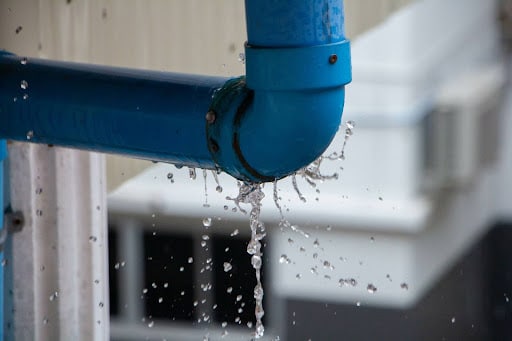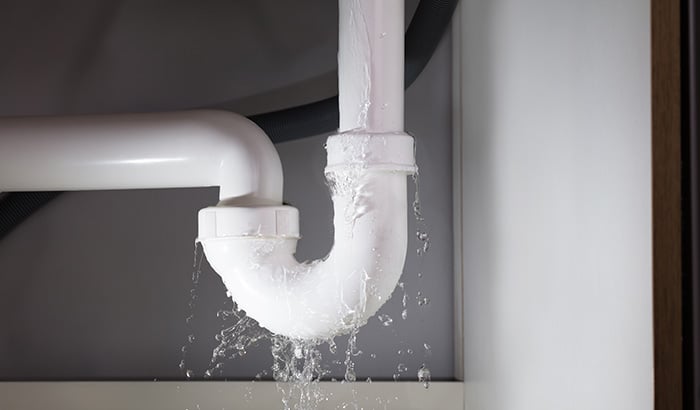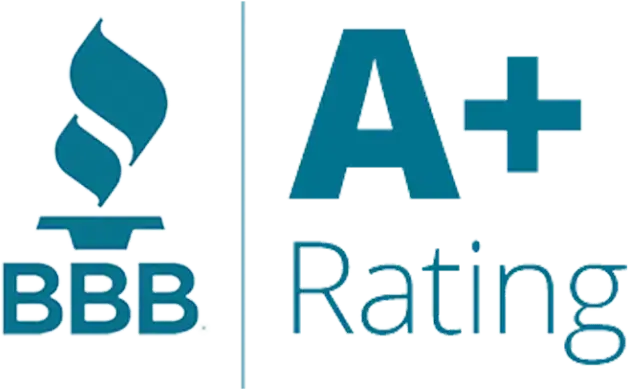Undetected water leaks can wreak havoc on your home, leading to costly repairs, sky-high water bills, and unnecessary headaches. But with a few proactive steps and keen awareness, you’ll be able to spot the tell-tale signs of leaks before they escalate into major problems.
Whether you’re a new homeowner or a seasoned property enthusiast, these practical tips will empower you to maintain your home’s integrity, conserve water, and keep your finances afloat. Let’s dive into the world of early leak detection. Here are 8 Tips for early leak detection.
Tip #1: Know Your Water System.
Knowing the layout of your home’s water system is essential for early leak detection for several reasons:
- Familiarity With Water Paths Understanding where pipes run through your home helps you quickly identify the source of any leaks. If you notice a wet spot on a wall or ceiling, knowing the water system layout lets you determine whether it’s likely related to plumbing.
- Main Water Shut-off Valve: Knowing the location of the main water shut-off valve is critical. If a leak is detected, quickly shutting off the water prevents further damage until repairs are made.
- Water Meter Insights: Being familiar with reading your water meter will help you detect leaks. By checking the meter before and after a period of no water use, you can tell if water is still flowing, which might indicate a leak.
- Preventative Maintenance Checks: Knowing your system enables you to perform routine checks on areas prone to leaking, such as under sinks, around appliance connections, and at hose bibs.
- Efficient Troubleshooting: When you know your system, you’re able to troubleshoot more efficiently, either by yourself or when guiding a professional to the potential source of a leak.
- Emergency Readiness: In case of a significant leak, quickly describing the layout to a plumber over the phone saves valuable time, potentially mitigating damage.
In essence, knowledge of your water system empowers you to be the first line of defense against leaks, leading to quicker responses and reduced damage and repair costs.

Tip #2: Monitor Water Bills.
Monitoring your water bills is a critical strategy for catching leaks early because it indirectly indicates your household’s water usage patterns. Here’s why it’s important:
- Unexplained Increase in Water Usage: By keeping track of your water bills, you establish a baseline of what’s normal for your household. If your water bill suddenly spikes without a corresponding increase in actual water usage, it could signal a hidden leak and should be investigated. Regularly comparing your bills helps you spot these anomalies.
- Cost Savings: Detecting water leaks early on prevents a minor issue from becoming a costly problem. Even a slow leak wastes significant water, leading to higher bills. The faster you catch the leak, the more money you save.
- Subtle Changes: Some leaks are so slow that the physical signs are not immediately apparent. The water bill might be your first clue that there’s a problem. So, don’t just brush it off if you get a higher-than-usual water bill. It’s the perfect opportunity to ensure you don’t have a leak somewhere.
Tip #3: InspectAppliances Regularly.
Inspecting your appliances regularly is crucial for detecting water leaks early. It’s part of preventative maintenance and keeps mold and mildew at bay.
It’s also essential for avoiding water damage since appliances (washing machines, dishwashers, and water heaters) are common sources of leaks. Undetected leaks from these appliances lead to significant water damage, especially if the leak seeps into subflooring or behind walls.
Tip #4: Use Food Coloring for Toilet Leak Tests.
Using food coloring to test your toilet for leaks is a simple, cost-effective method to identify whether your toilet wastes water due to a leak from the tank to the bowl, which often goes unnoticed.
This method works well because food coloring is easy to notice, non-invasive, and gets you immediate results. After adding the food coloring to the tank, it will only take 30 minutes for colored water to appear in the bowl if there’s a leak. Then, if there is a leak, you can take action to repair it.
Tip #5: Listen for Running Water.
Listening to the sound of running water is a simple but effective way to detect leaks early on. It indicates water movement where there should be none. Here’s why it’s important.
- Audible Clues: Some leaks are not immediately visible, but you can hear them. A continuous sound of water running when all taps are closed suggests a leak somewhere in the system. Try to pinpoint where you’re hearing the noise to narrow down where you’re searching for the leak.
- Indication of Hidden Leaks: Leaks within walls, under floors, or in the foundation might not leave visible signs until significant damage has occurred simply because it’s hidden.
- Prevent Structural Damage: Leaks within walls, under floors, or in the foundation may not leave visible signs until significant damage has occurred. If you hear the leak before you see it, you can mitigate it early, saving time and money.
Tip #6: Perform a Visual Inspection for Mildew and Mold.
Visual inspections for mold and mildew are crucial in detecting water leaks because these fungi indicate persistent moisture, which is often caused by leaks that have gone unnoticed. Here’s why it’s important to use this method:
- Early Signs of Moisture Issues: Mold and mildew often appear before a leak becomes large enough to cause visible water damage. Spotting these early leads to a quicker discovery of the leak source.
- Health Protection: Mold and mildew cause health problems, especially for individuals with allergies, asthma, or compromised immune systems. Detecting and addressing leaks that cause mold growth helps protect the health of the home’s occupants.
- Hidden Leak Identification: Because mold and mildew thrive in damp environments, their presence, especially in typically dry areas, often indicates a hidden water leak.
- Preserve Property Value: Ongoing water leaks leading to mold might decrease the value of your property. Regular inspections help maintain your home’s condition and value by catching these problems and mitigating them early on.

Tip #7: Check Outdoor Usage.
You know your irrigation systems and hoses? Well, as it turns out, they spring leaks from time to time. Checking outdoor water usage is an essential part of detecting leaks early on for several reasons. Let’s take a closer look.
- Irrigation Systems and Hoses: Irrigation systems and hoses are often the culprits of outdoor leaks. They develop leaks that go unnoticed because they are either underground or only used at certain times. Regular checks will catch these leaks early.
- Seasonal Variations: Outdoor pipes are subject to freezing and thawing with the seasons, which causes wear and leaks. Monitoring water use across seasons helps identify leaks that might develop due to these conditions.
- Landscaping Changes: New landscaping work damages underground pipes, leading to leaks. Keeping an eye on water usage after such changes helps catch any issues caused by the work.
- Water Pressure Fluctuations: Outdoor leaks easily affect overall water pressure. If you notice a drop in water pressure, it’s worth checking outdoor systems for leaks.
- Conserving Water: Outdoor leaks can be voluminous, leading to significant water waste. Detecting and repairing leaks promotes water conservation.
Tip #8: Test Water Pressure.
Testing water pressure is a valuable method for early leak detection. It enables you to identify subtle leaks, ensure your system has the integrity it needs, prevent major breaks, and protect your appliances.
- Identifying Subtle Leaks: Reduced water pressure is often one of the first signs of a leak in your plumbing system, especially if the leak is small and not immediately visible.
- System Integrity: Proper water pressure indicates a well-functioning plumbing system. A deviation from the normal pressure may suggest issues such as pipe corrosion, sediment build-up, or leaks.
- Preventing Major Breaks: Regular pressure tests help identify weaknesses in the plumbing before they result in catastrophic pipe failures, a situation no one wants to deal with.
- Protecting Appliances: Many home appliances require a certain range of water pressure to operate effectively. Identifying and addressing pressure issues helps prevent appliance damage.
So, there you have it! Those are your eight tips for detecting leaks early in your home. Now, you might wonder, what happens after you detect a leak. That’s where Pando Plumbing comes in.
Contact Pando Plumbing Today.
If you’ve spotted the warning signs of a leak or want peace of mind that your home is watertight, Pando Plumbing is here to help. Our team of expert plumbers specializes in detecting and repairing leaks with precision and care, ensuring that your home stays dry and secure.
Don’t let a small drip turn into a flood; contact Pando Plumbing today for a thorough inspection and swift, reliable service. Remember, the sooner you address a potential leak, the better you protect your home and wallet. Reach out to us — your home’s silent guardians against water damage.




